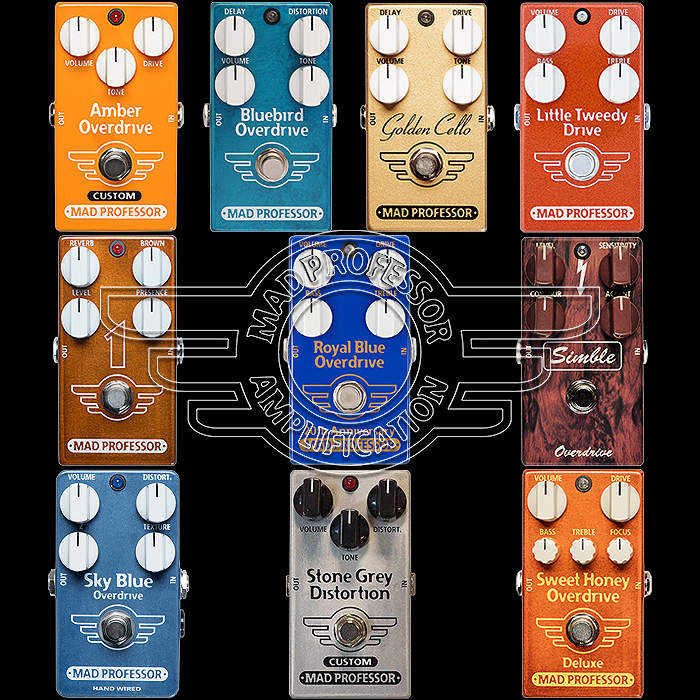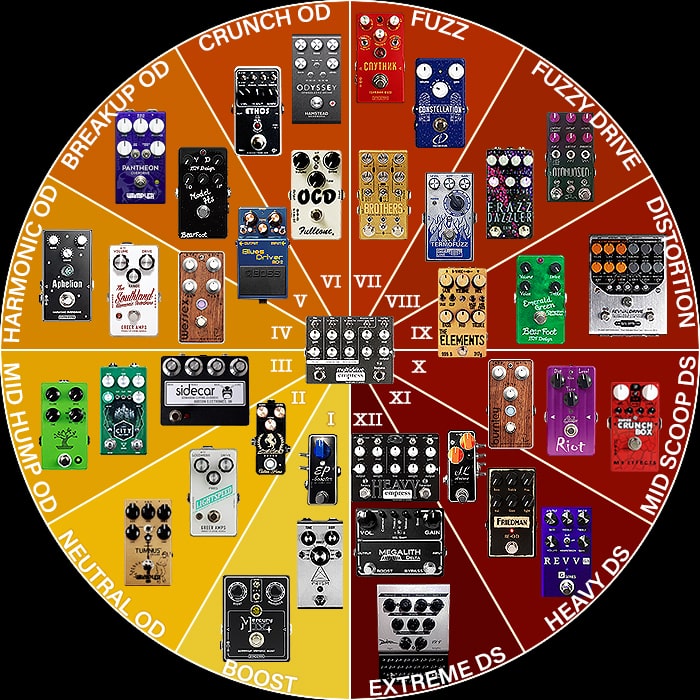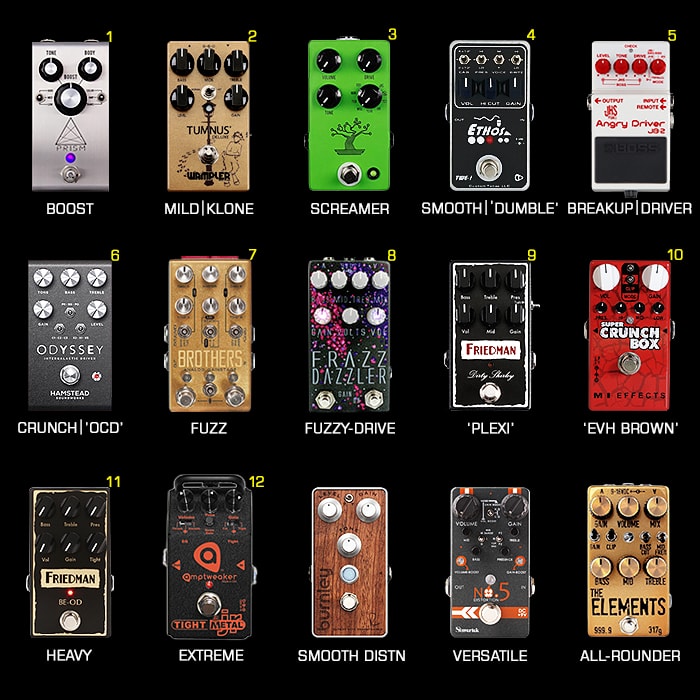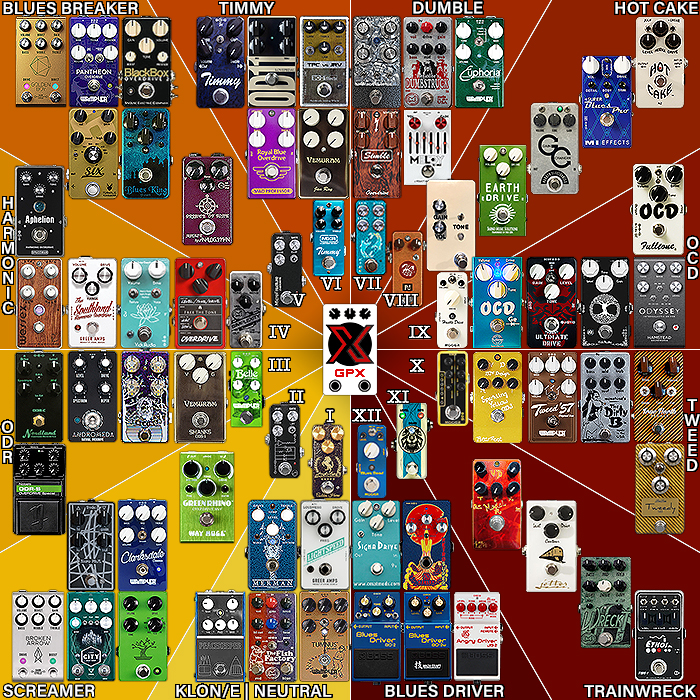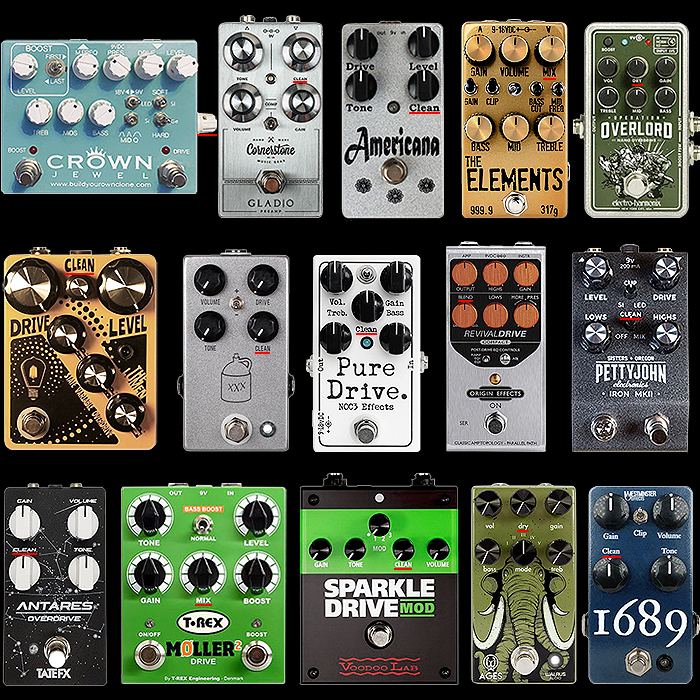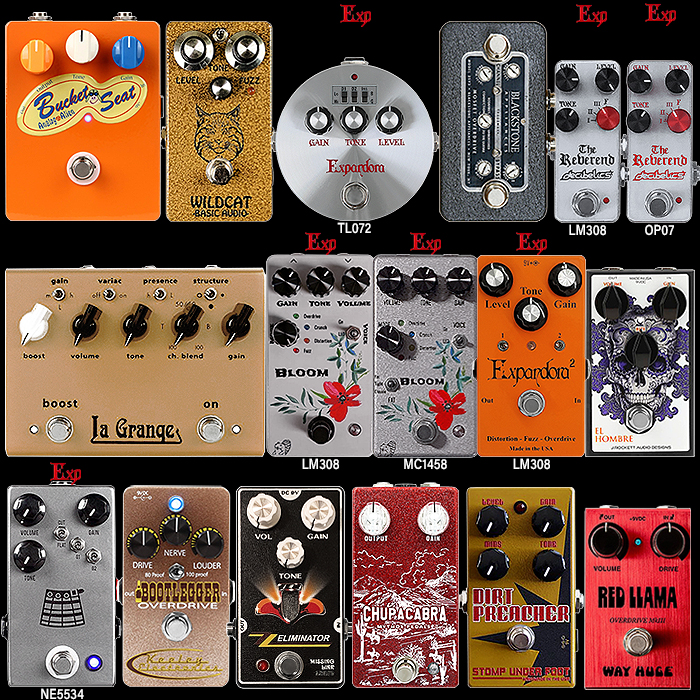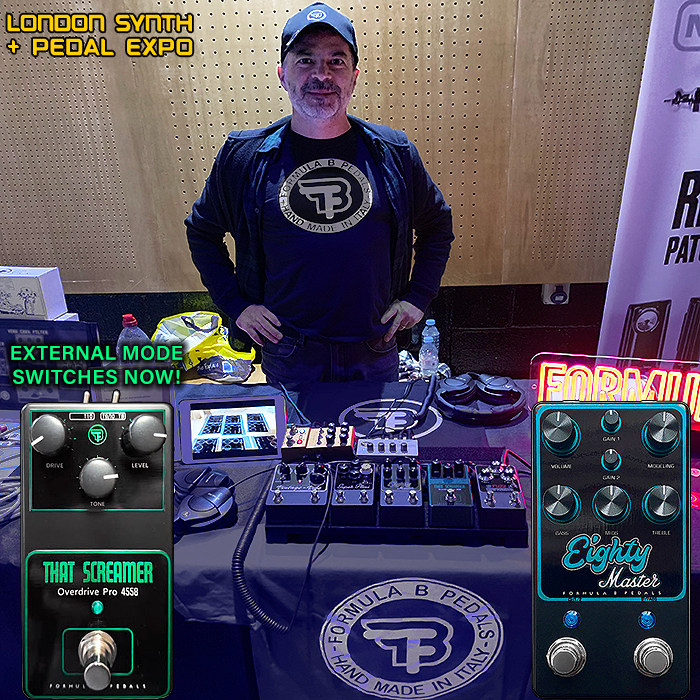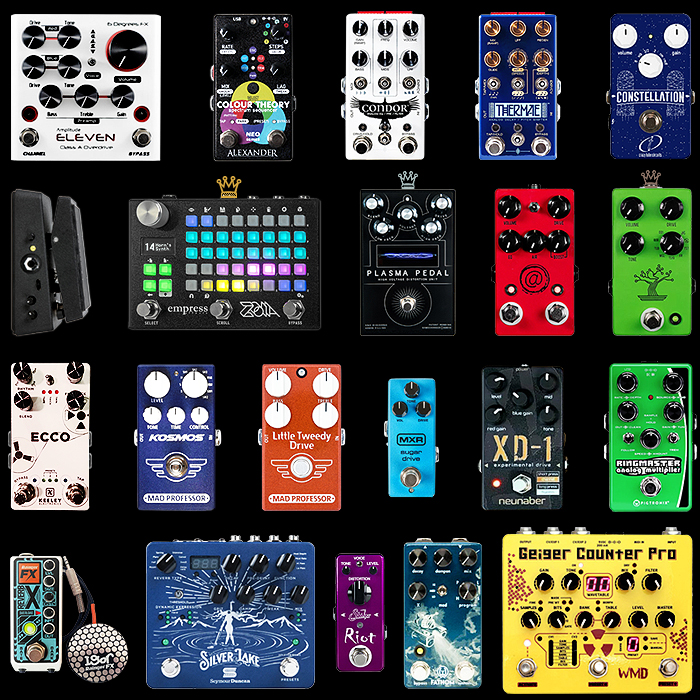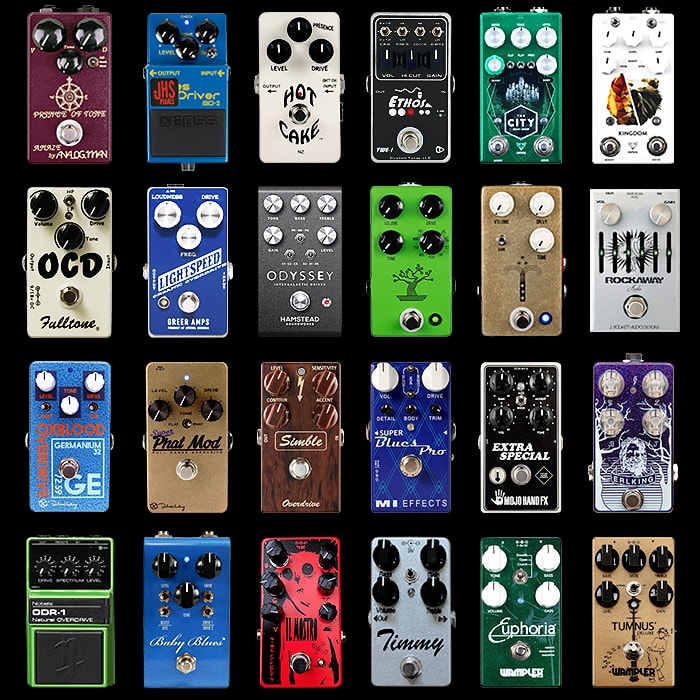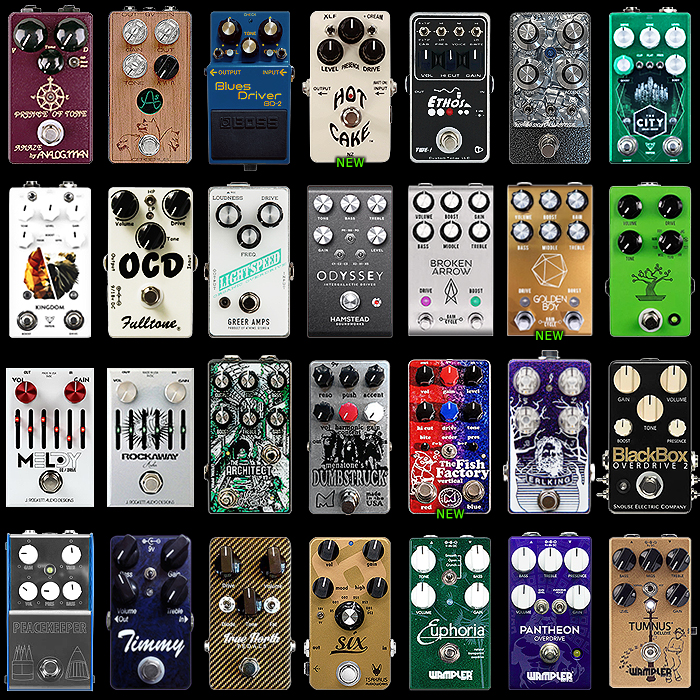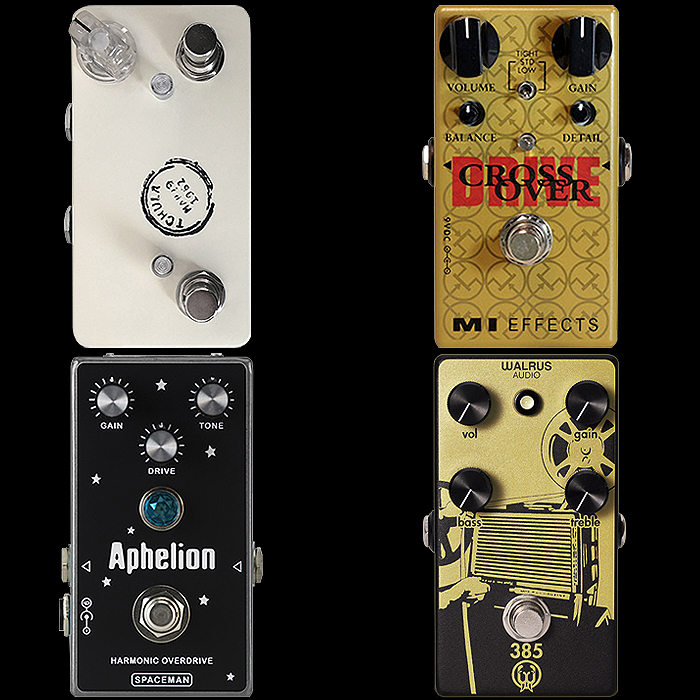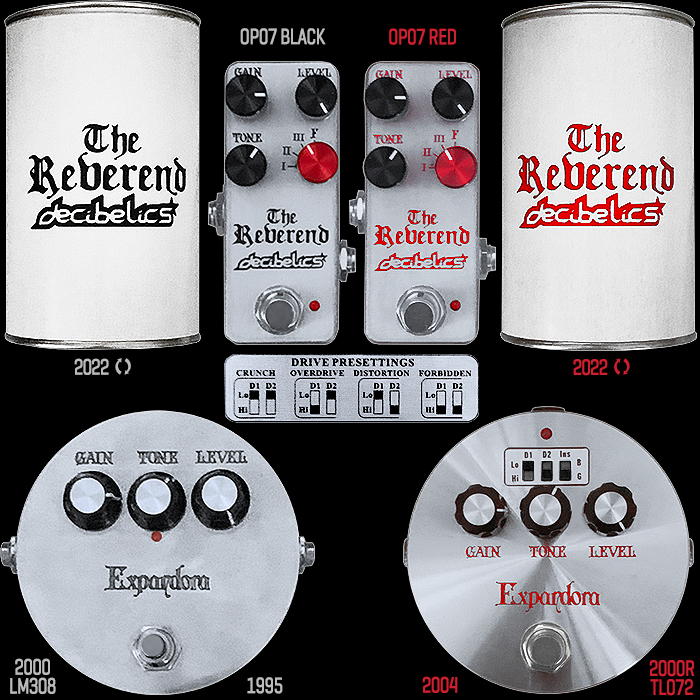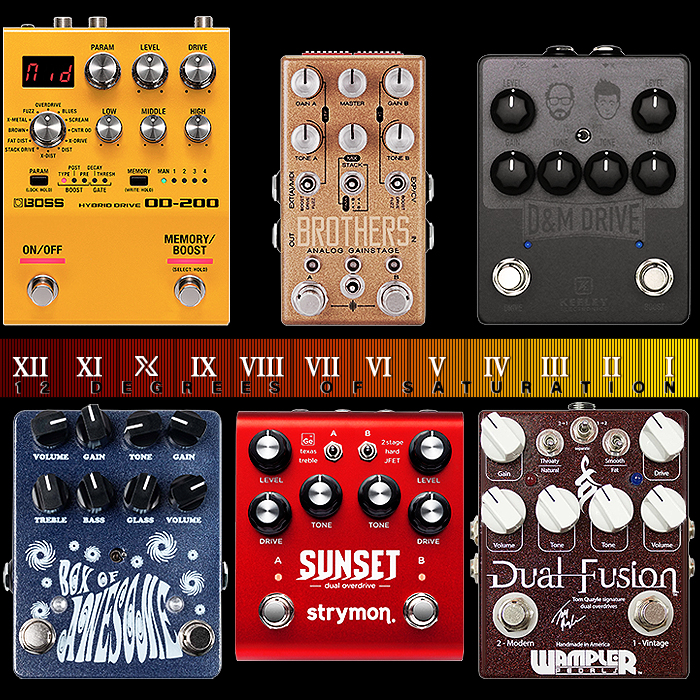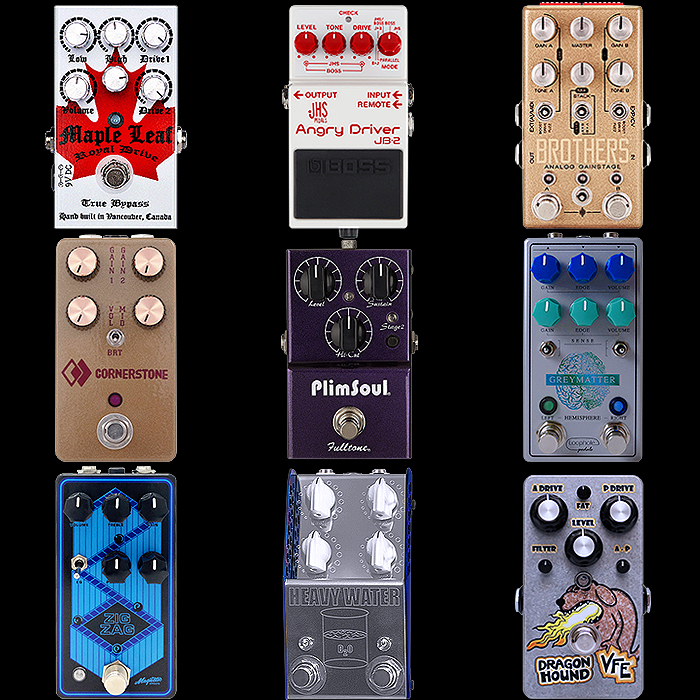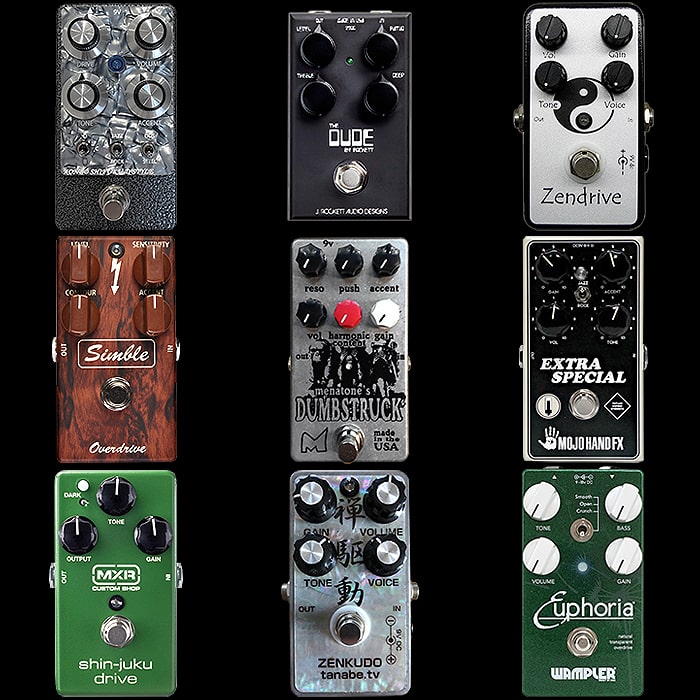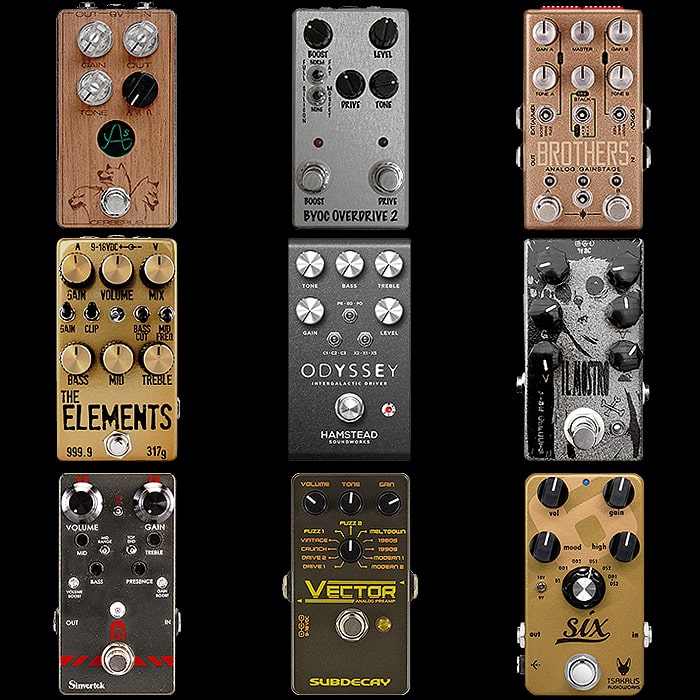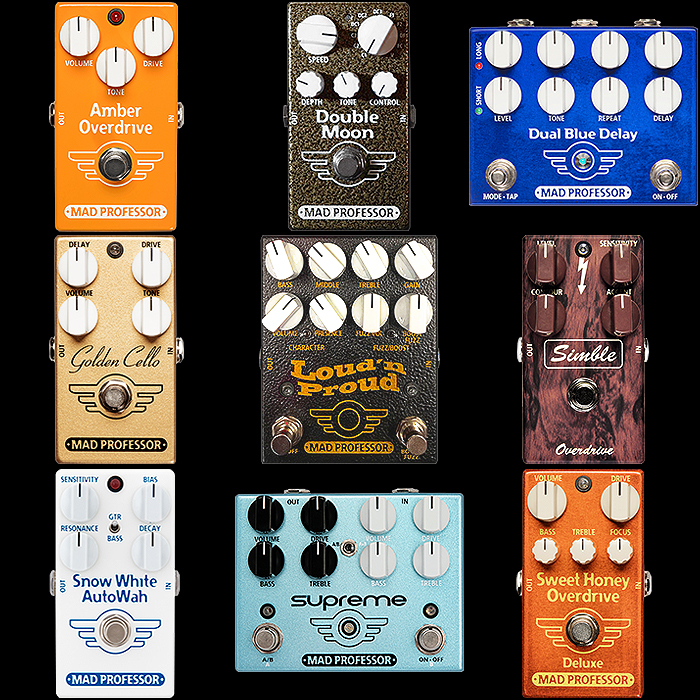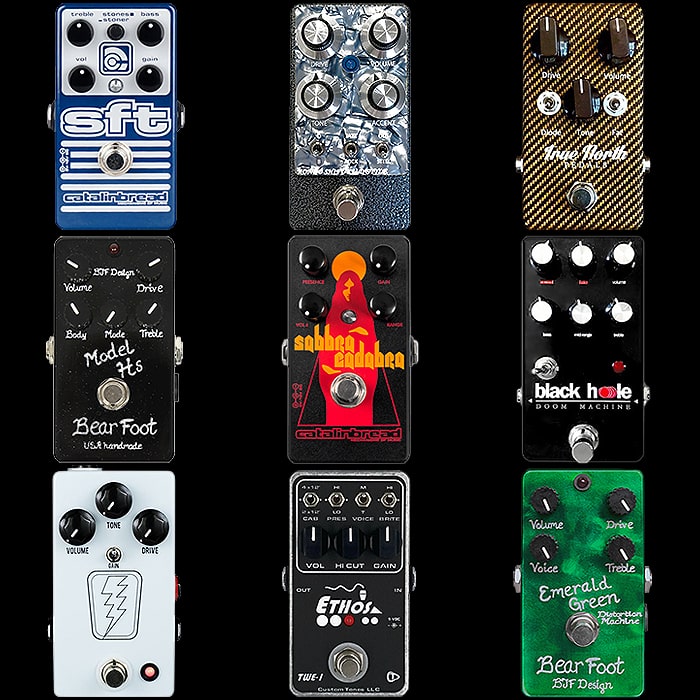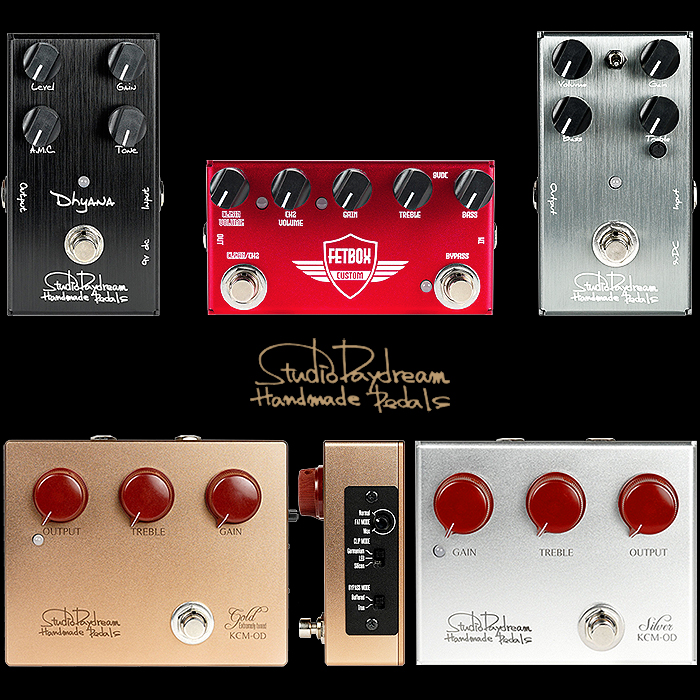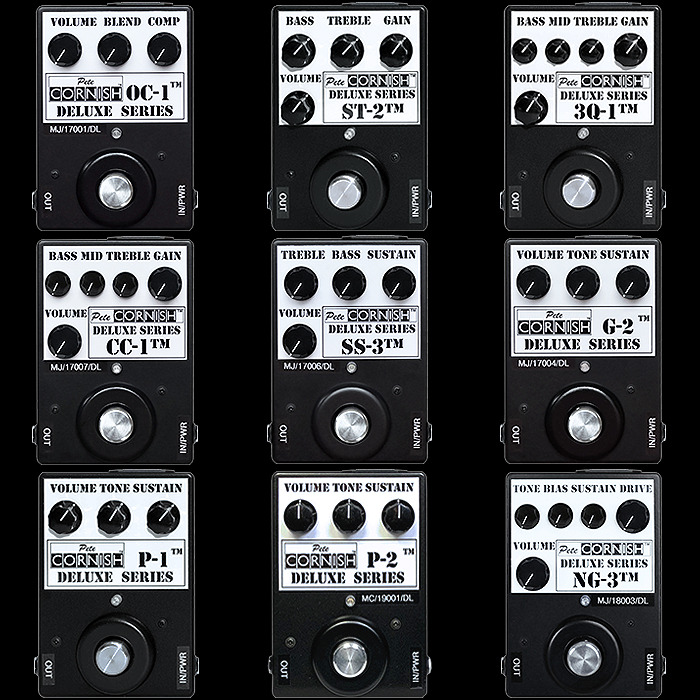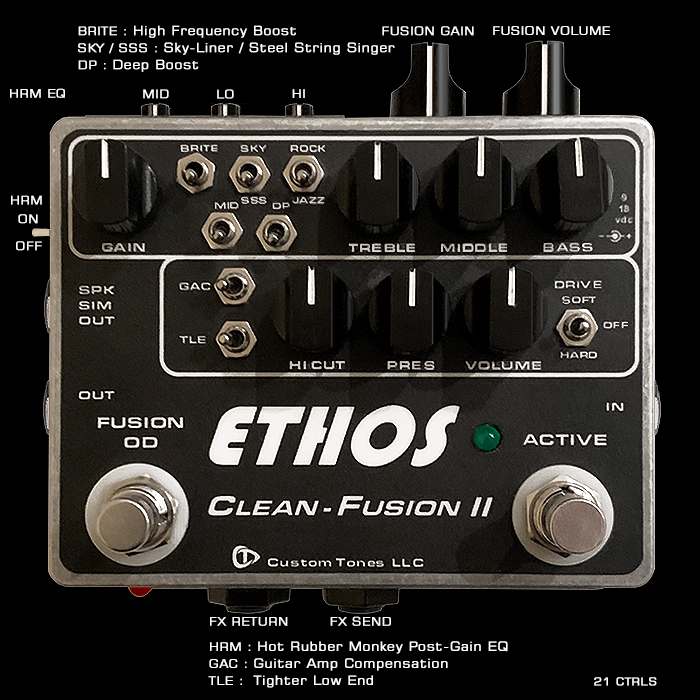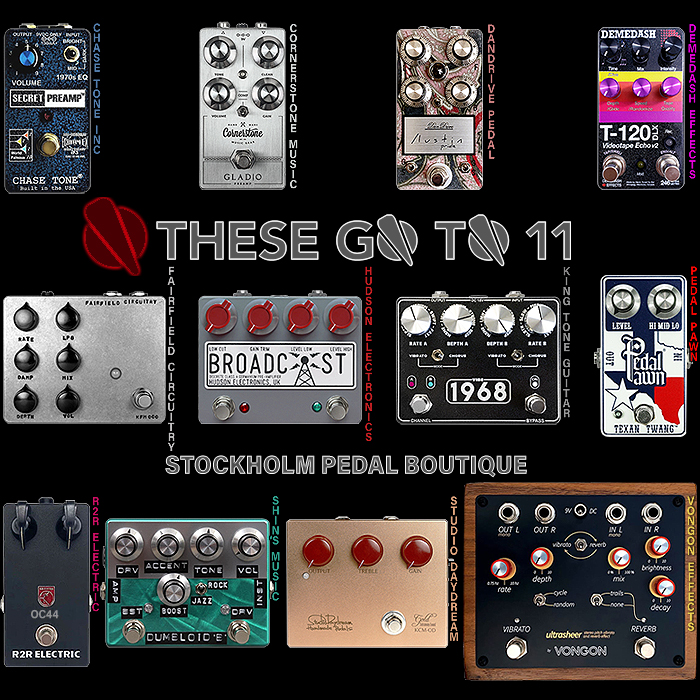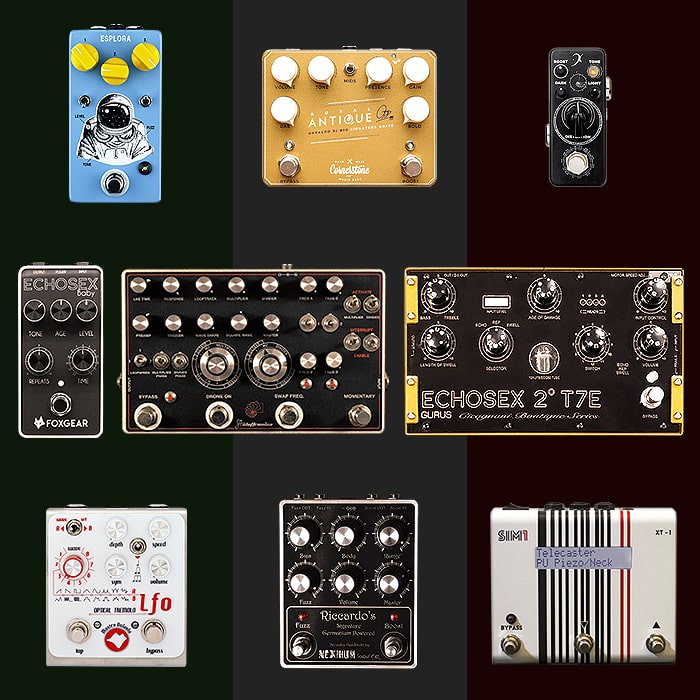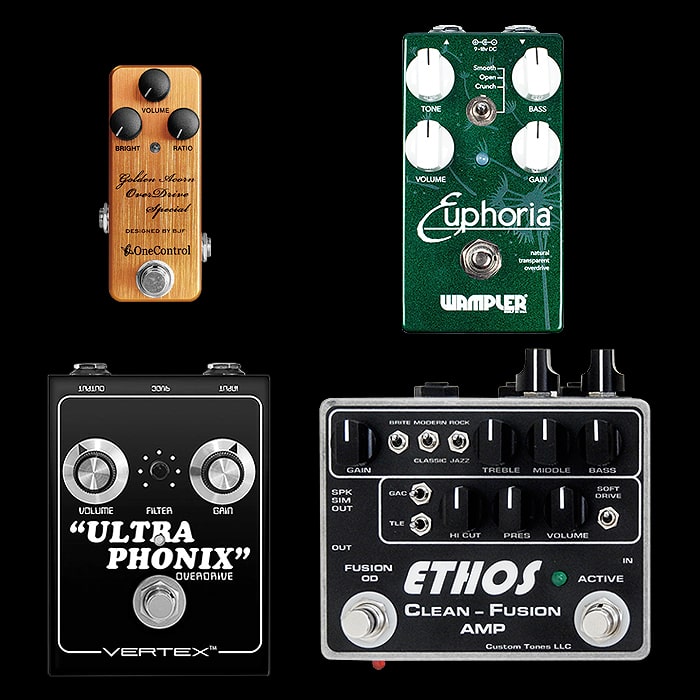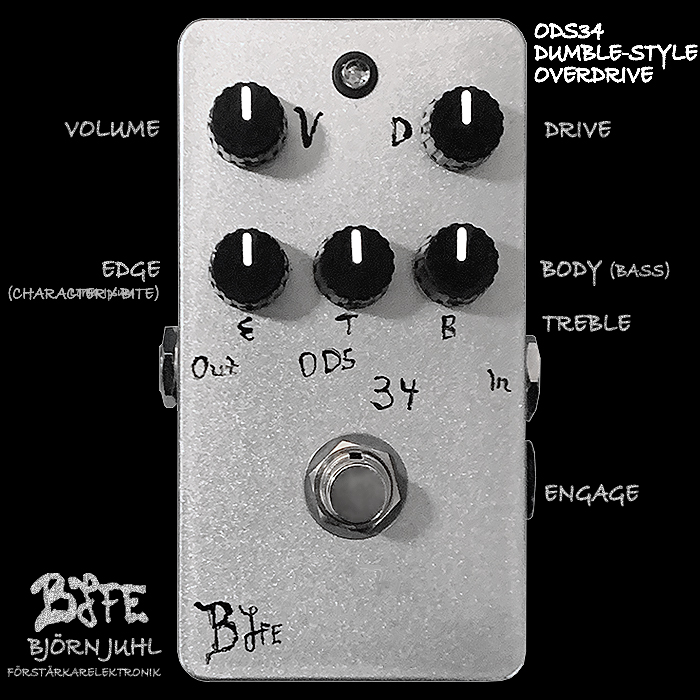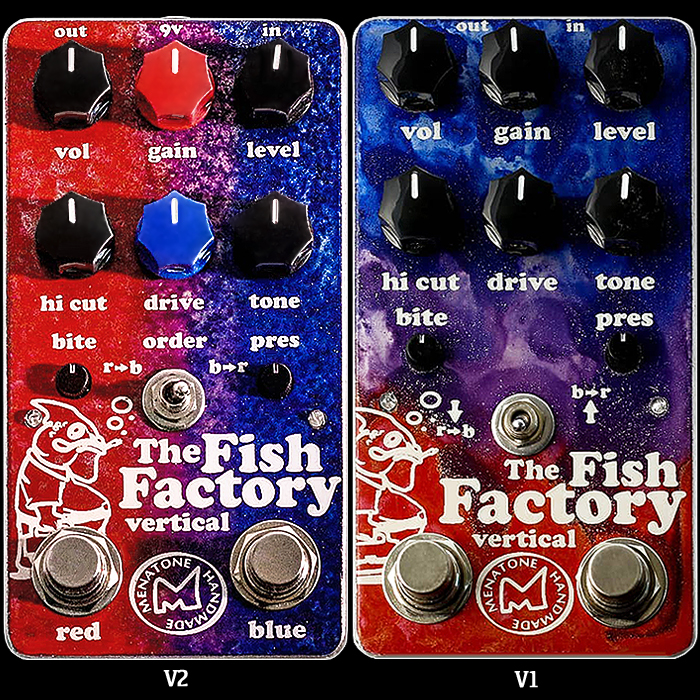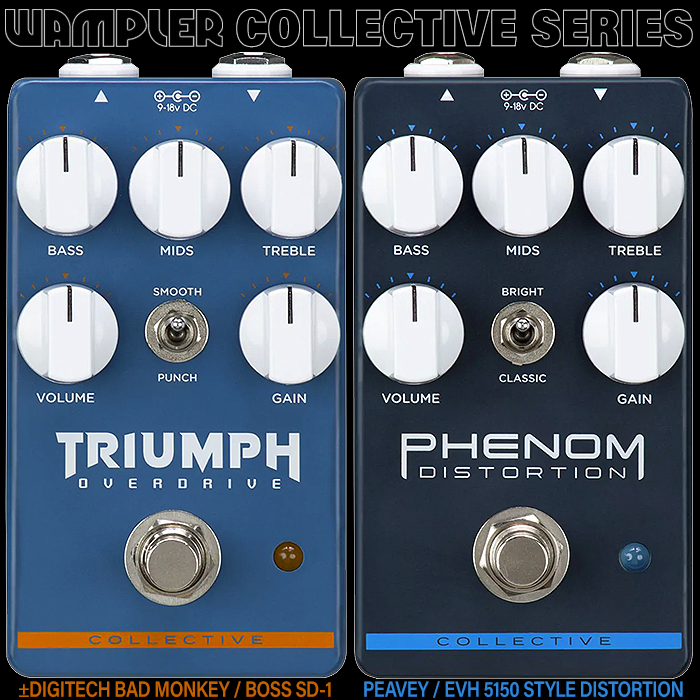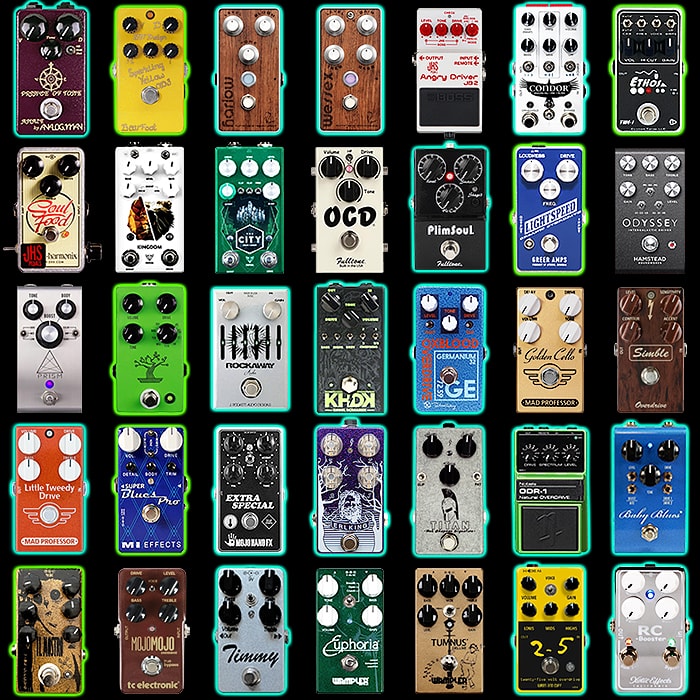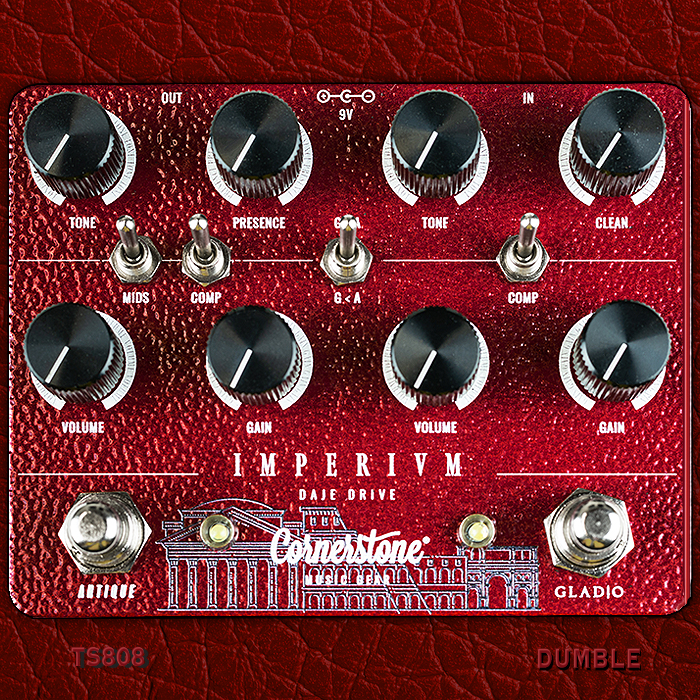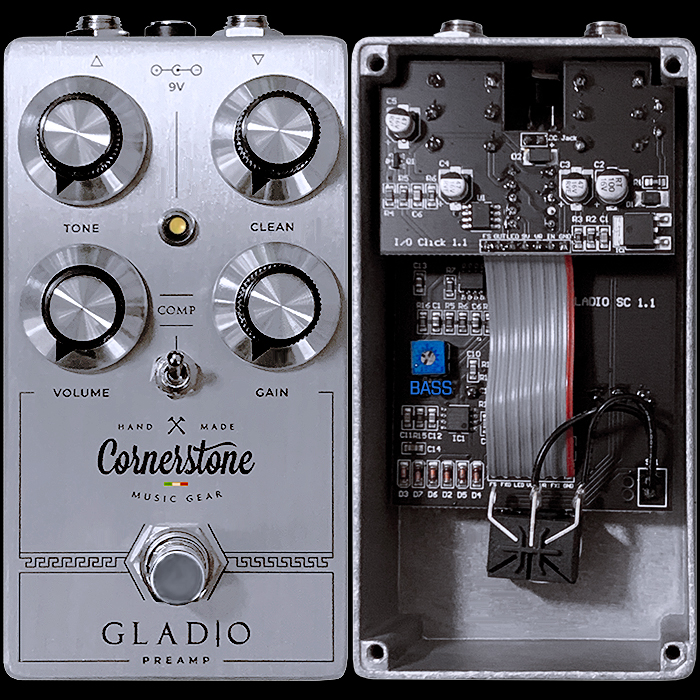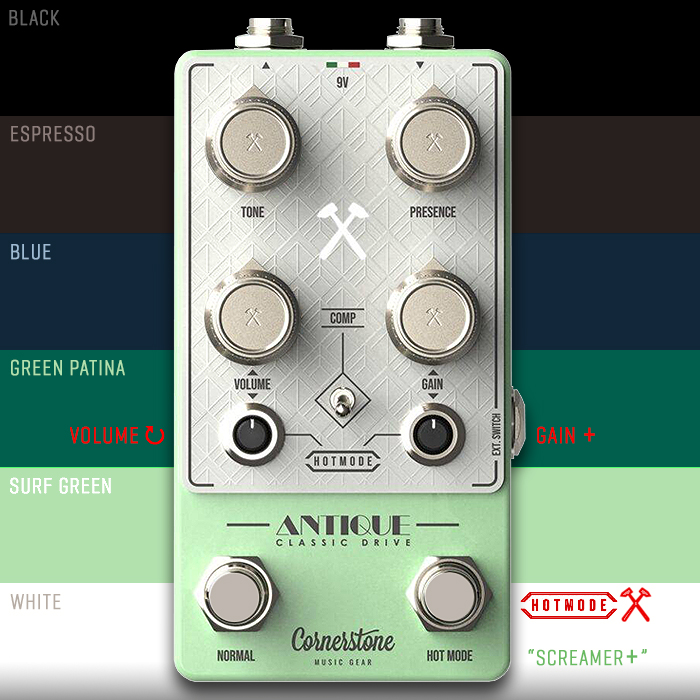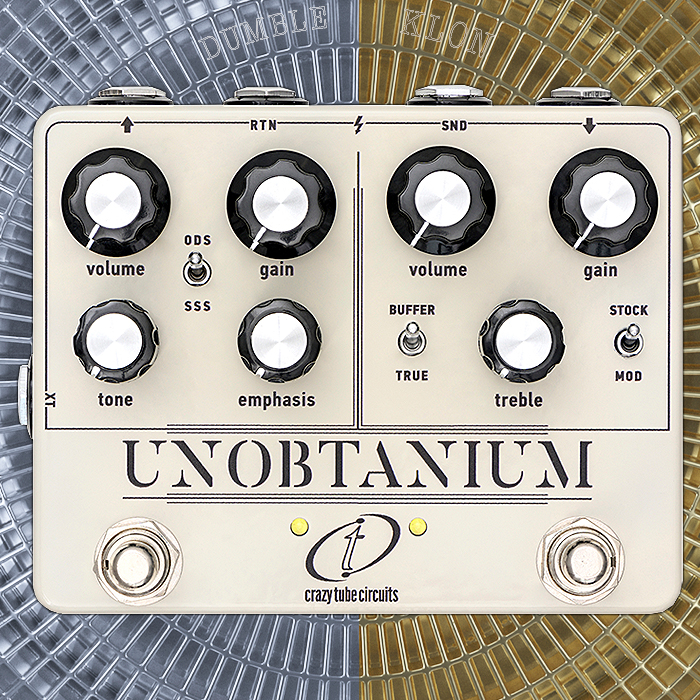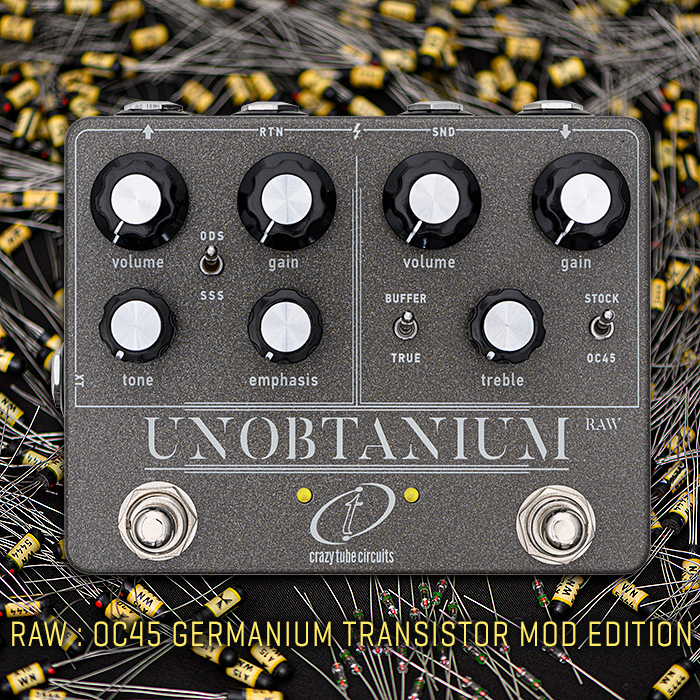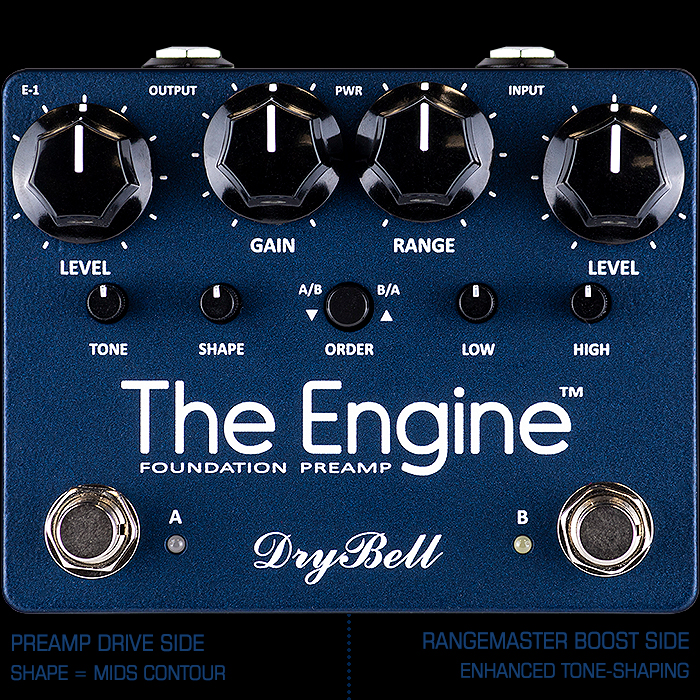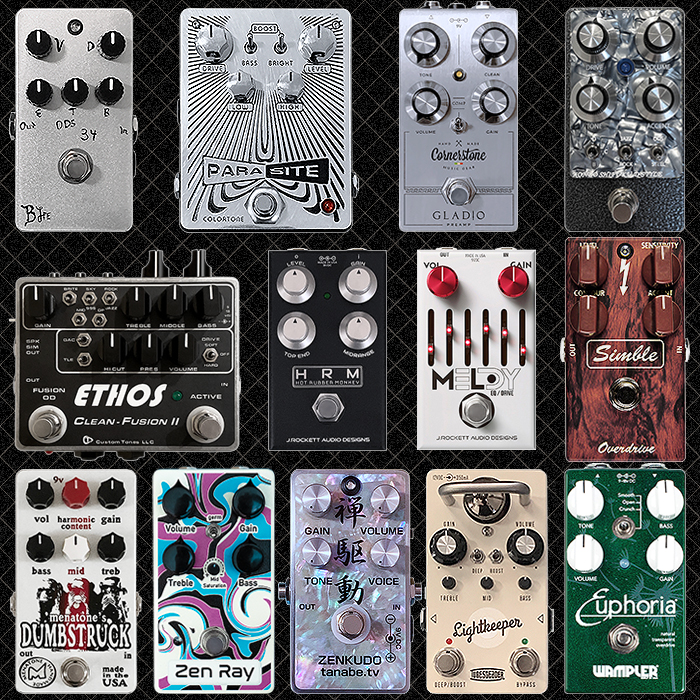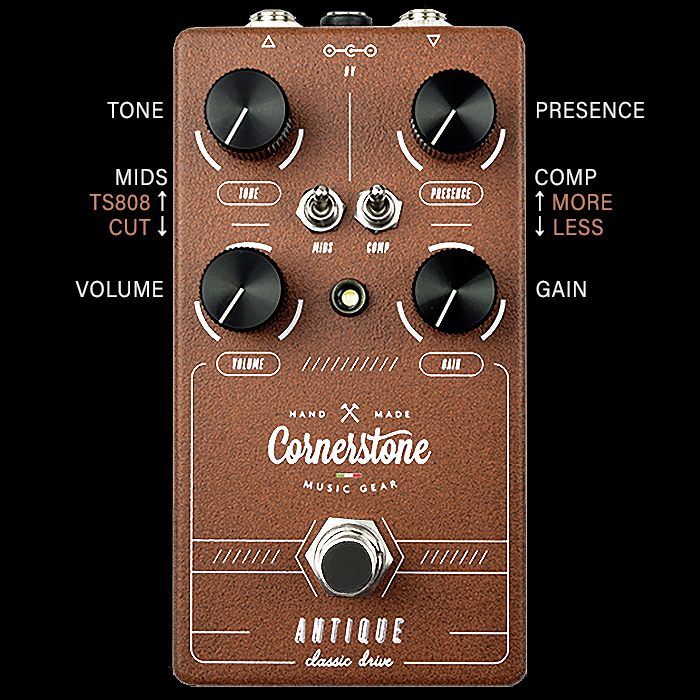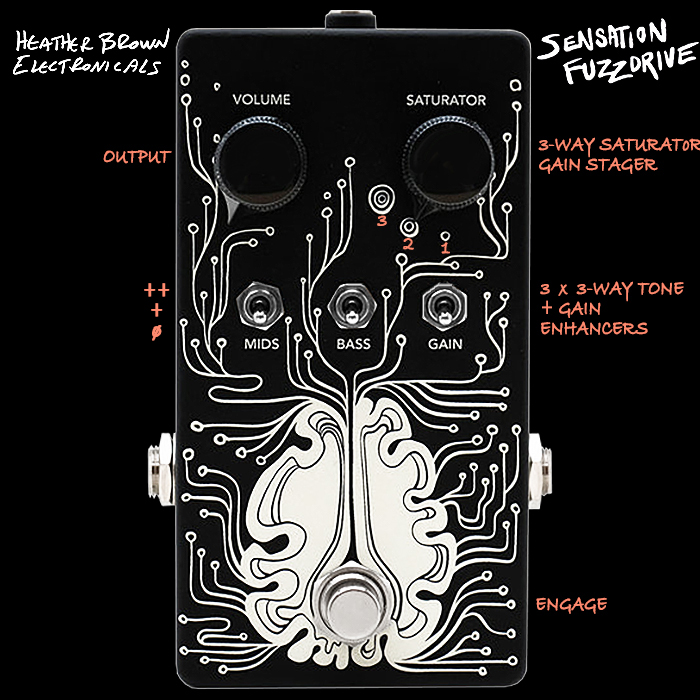Which Medium-Enclosure Dumble-Style Pedal is Right for You?
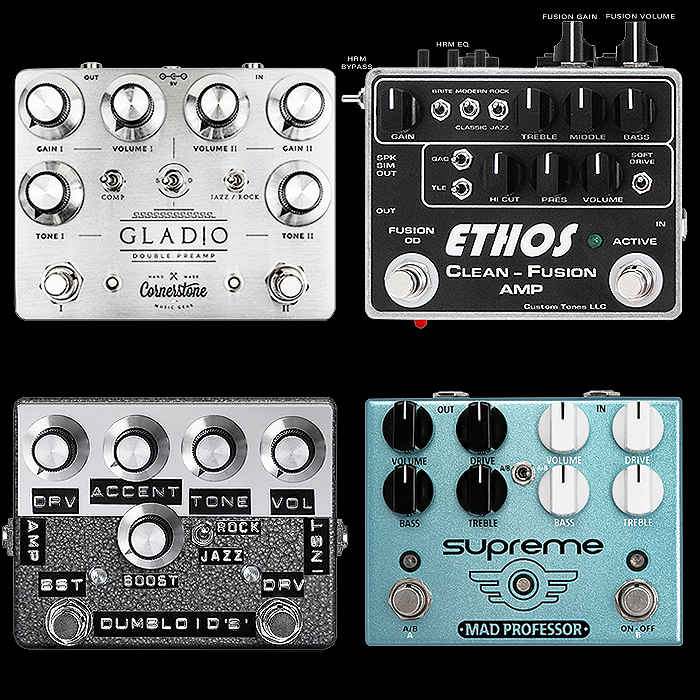
This feature was inspired by two gentlemen - one Alexander ’Howard’ Dumble, and my friend Justin O who asked me what my take on the Cornerstone Gladio was. I was of course determined to do my typical comparative overview and name the usual suspects - while the first time I started down this route I ended up doing the Blues Breaker / King of Tone style feature instead. The previous article was based on a number of very similar pedals - circuit and control-topology-wise.
While for these 4 medium sized Dumble style boxes we are not really comparing like with like. In fact each of these pedals offers something different - and may very well appeal to a slightly different type of player. I must confess that I have already tracked down my absolutel preferred Dumble-Style pedal - in the guise of the compact Demon Pedals Kondo-Shifuku - that just sounds exactly like my own idealised version / take on the Dumble ODS tone. Obviously the Dumble ODS is/was a highly complex amplifier - capable of, and known for several varieties of tone - both clean and varying stages of overdriven. A lot of players like the ODS for their clean tone, while for me it’s always been about that slightly fuzz-edged overdrive - which has just the tiniest hint of sizzle to it and creates amazing harmonics - large because of its core pre-gain tone-stack setup. I don’t really change the settings on my Kondo too much - but I do tweak for different levels of gain - which does require some degree of re-calibraiton.
The advantage of having the medium sized pedals is that you have a second instantly footswitchable voicing, and in the case of the Gladio and Supreme - a third - where you can combine both channels together in series stacking. The Gladio and the Supreme are the most similar here - and you have a natural trade off with the 4th control - either a voicing switch per the Gladio, or an extra Bass control per the Supreme. The Ethos is very much an either/or 2 Channel Clean/Overdrive preamp, while the Dumbloid ’B’ is a classic Overdrive + Boost preamp type.
The Supreme is the best value proposition here, and strangely the Dumbloid ’B’ is the priciest - costing even more than the fully optioned out Ethos Clean-Fusion. Of these 4 - it’s the Ethos Clean-Fusion I’ve had my eyes on for the longest time - but they’ve been discontinued for a while now - likely as they’re just too fiddly and complex to build. You really cannot cram in more than those 19 separate controls - which include the HRM post-gain 3-Band EQ option.
All of these sound great and each has its own dedicated and celebrated followers. I really want one of the Ethos Clean-Fusions - but it is highly unlikely I will ever get the one I want - particularly not a fully-loaded version. Hence the most likely outcome for me here is either the Gladio or the Supreme - we’ll see where my mindset is at once I’ve reviewed all the separate elements.
Here follow the details :
Cornerstone Gladio Double PreAmp - €349
I first came across Cornerstone and Emilio and Linda when I did my 'Best of Italian Guitar Pedals and Pedal Builders' article back in 2018. Back then I featured the brand's flagship pedal at the time - which was the Royal Antique Overdrive + Boost. Since then the Gladio has of course been launched and takes the main focus of the company's efforts. Like many I seem to have seen the Gladio around quite a bit in the last 6 months or so - and thought it was in somewhat wider distribution, while there aren't really that many A-list demos of the pedal. I think many of us witnessed the delight of Mick and Dan of That Pedal Show fame when they came across the Gladio. In essence it portrays two different sides of the ODS - with the right-hand side with its Jazz/Rock switch the more classic variety, and the first channel here actually adding slightly more smoothness and thickness courtesy of a Compression switch. My own Dumble-style preferences tend to lean towards the more sizzling 'Rock' side - but I like all flavours of Dumble really - while my favourite clean is possible still the Vox - that said on Tim Pierce's recent VH4 demo he made that clean channel sound amazing. Generally though I'm more for rather more break-up overdrive than pristine cleans - while both of course are possible here. It's funny that the Gladio has a similar system to the Mad Professor Supreme - where you can either apply each channel on a preamp voicing basis, or stack the two together. This differs significantly from my previous Blues Breaker / KOT piece where the default is typically either / or / both and the toggle switch selects the direction of series stacking. I don't think anyone can dispute that the Gladio sounds fantastic - all these are very near the same size - so it depends on what you're looking for. I would say the the aforementioned Supreme offers quite a lot of competition here - and a significantly keener price - so that may sway some. In many ways though the Gladio is the most desirable here - and it's elegant looks match its finely crafted tonal palette.
It has 9 controls as follows :
- Gain x 2 (I/II)
- Volume x 2
- Tone x 2
- Compression Switch
- S/D - Single / Double Playback Mode Switch
- Jazz/Rock Switch - Smooth / Fat
Custom Tones Ethos Clean-Fusion II PreAmp - discontinued - from $395 > $630 fully loaded as pictured
This was probably the first Dumble pedal I had a thing for - but by the time I found my way to it, it was already discontinued - or certainly on the point of being discontinued then. I actually featured its bigger brother first - the one with the 3 footswitches - which sort of went head-to-head with the even larger Van Weelden Royal Overdrive - which TPS Mick had on his board for a while. I quickly decided that those pedals were just way too big - and I like more of a mix of overdrive tones - with the Dumble style still essential, but one of several preferred overdrive flavours. So I switched my focus to the more compact Clean-Fusion which crams in almost as many controls into a far more compact package. In fact you would be very hard-pushed to find a medium-enclosure pedal with this many controls - 19 in all. Still not as many as the 28 of the Origin Effects RevivalDrive Custom - but probably more than most would be comfortable with. As you will see in my next article I'm one of those weirdos who likes lots of knobs and switches on pedals. I'm not the one to simply follow the mainstream and dial in one or two classically accepted tones on the pedal - rather I use the extended range controls to craft and shape different and more unusual tones - as I explained on my in-depth RevivalDrive overview. In the case of the Clean-Fusion you have parallel controls for Clean and Fusion Gain and Volume - which both impact on the final tone / saturation. I have illustrated the fully loaded edition of the pedal - which includes the following optional extras :
- FX Loop $89
- HRM EQ $109
- HRM Byoass $37
HRM meaning Hot Rubber Monkey is actually an Alexander Dumble term - which he applies to his post-gain EQ circuit. Obviously part of the prowess of the Dumble style of circuit is how it EQ's into the gain stage - while here you also have a 3-band EQ to shape the output tone. You can see the two jacks of the FX Loop just peaking out behind the mini knobs of the HRM EQ and the Fusion Gain knob. I've never seen this exact version in the wild - but surely there are some - this for me would likely be my ultimate Dumble-style pedal in terms of all-round tone-shaping and tweakability. There is just nothing else comparative out there - and certain not at this size. It's likely to fetch quite a high price on the second hand market - I've seen versions without the optional extras go for between $350 and $650 - while one such sold recently on Reverb.com for just over the $500 mark. I will keep stalking Reverb.com - but knowing my luck I will have just purchased something hideously expensive when the opportunity next rolls around! Great pedal though if you can get your hands on one.
19 Controls! :
- 3-Band HRM EQ - Mid / Lo / Hi (Hot Rubber Monkey post-gain passive EQ)
- Fusion Gain
- Fusion Volume
- HRM Bypass Switch
- Gain (Clean)
- Brite - Brite Cap
- Modern/Classic Voicing
- Rock/Jazz Mode
- Treble
- Middle
- Bass
- GAC - Guitar Amp Compensation Switch
- TLE - Tighten-up Low End Switch
- Hi Cut
- Presence
- Volume (Clean)
- Soft Drive Switch - lower saturation
Shin's Music Dumbloid 'B' Boost Special - $650
Shin's Dumbloid pedals are very much a known quantity and for years have been known as the most authentic of Dumble-style clones. The high price is partly to do with the fact these are Japanese exports, but also partly because of their celebrity cachet - a number of celebrate guitarists have their own sparkly finished editions of these pedals. You get the classic ODS nomenclature - with use of Accent, Rock/Jazz terminology - and if you can't stand too many buttons and switches - then this is the simplest edition here. You can of course get a Dumbloid minus the boost, and in fact a Double Dumbloid - which is huge. To fit this category the selected one is the appropriate option. You can't fault its tone - but you could probably question the slightly high price. This was on the radar for me for a while - but I feel there are other Dumbles more suited to my preferences and more aligned with my practicalities. This is still a great option - especially if you can get a decent second-hand one.
It has the simplest of 6 controls :
- Drive
- Accent
- Tone
- Volume
- Boost
- Rock/Jazz Switch
It includes the classic Rock/Jazz Switch or sort of Fat/Smooth voicings, and here Accent is of course a sort of Presence control which adds more high end sizzle.
Mad Professor Supreme Matt Schofield Signature Dual Channel Overdrive (Royal Blue + Simble) - €259
My good friend Sof has and loves one of these. Anyone who loves Matt Schofield's simple but elegantly dynamic tones would find it hard not to. This is the first pedal featured here that adds a different flavour - in that the first channel is not a Dumble derivative but rather a high headroom iteration of the Royal Blue Overdrive circuit - which is not overly dissimilar at its core to a Timmy. Both overdrive circuits have been significantly tweaked and shaped for Matt's preferences and include much more headroom on-tap than the original versions. The second channel is a further high-headroom iteration of the Simble/Twimble circuit - which is Mad Professor's take on the core Dumble style. As with my previous round of Blues Breaker pedals - both sides have been set up to combine beautifully and make the most of their extended tonal-range - courtesy of those 2-Band EQs. It has the same mode switching option as the Gladio - here labelled A/B | A+B, where you can switch individual channels or combine the pair. There are lots of reason why you would go for this one - but there are also minus points for some in that this is a very specific signature pedal which has been optimised towards a single player's preferences. On the money side - this is obviously the smart choice - depends where your head/heart sensibilities lie to a degree - and of course your spending preferences. This is possibly the most likely acquisition for me, while in many ways I prefer the Gladio.
A Side - High Headroom Royal Blue Derivative - not altogether dissimilar to Timmy but slightly softer and more rounded
B Side - High Headroom Simble/Twimble Derivative - based on Finnish amp wizard Lassi Ukkonen's circuit. Funnily the Simble was my first Dumble and Mad Professor pedal, and in a somewhat treasonous move toward Björn Juhl - one of the few Mad Professor circuits not based on one of Björn's classic circuits.
Both sides / channels have :
- Volume
- Drive
- Bass
- Treble
Then A/B | A+B Switch - for a total of 9 controls.
Bonus Round! : Wampler Dual Fusion Drive Tom Quayle Signature Dual Drive - £210
I've obviously just included this recently in its V1 Vertical Medium format for the piece on all-rounder Dual-Channel / Multi-Drive pedals. I still prefer the original format but it's a decent proposition in any format truly and combines a derivation of Brian's Euphoria Overdrive (Dumble-style) with a derivation of the Paisley Drive circuit (Extended-range Tube Screamer). Both sides have been exactingly honed to Tom Quayle's tonal preferences with essentially Smooth and Fat voicing switch variations of each - while on one side they are labelled Natural and Throaty - but sort of do the same kind of thing with each circuit. Obviously a huge amount of range here and the two sides really smartly calibrated to complement each other's tonal profiles. I'm obviously a huge fan of Brian Wampler - with 12 of his drives already in my collection. This is of course another worthy consideration in this category. I did not overlook it entirely - I just felt that I would focus on the above 4 as they were more active in my current deliberations - and graphically the 4 look elegant in a head-to-head. Thanks to Morgan P for bringing this to my notice and making this happen!
Final Thoughts
As mentioned these are all great pedals in their own right - the Supreme is the most accessible, the Gladio likely the most desirable, and the Ethos certainly the most tweakable - and full-on unobtanium. I'm sort of discounting the Shin Dumbloid here as it's slightly over-priced for me, and slightly harder to come by.
I've always said that pedals are inspiration machines - and it's a combination of factors that make them work - not just core tonal output - but how they overall work and look - and how easy they are to live with.
It kind of comes down to a two-horse race in the end really on practical terms - and there really isn't much in it - but while I love everything about the Supreme - I'm slightly more captivated by the Gladio - even though its near enough £100 dearer.
Depending on your disposable means - I don't think you would be disappointed with any of these - all will give you amazing tones - it's the how here which carries the major criteria.



















